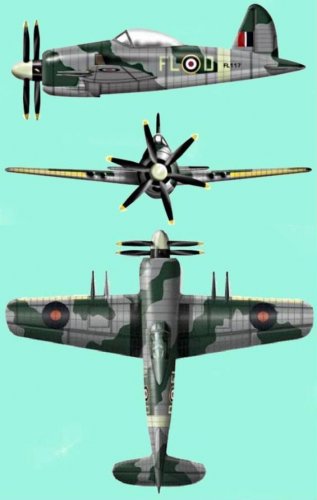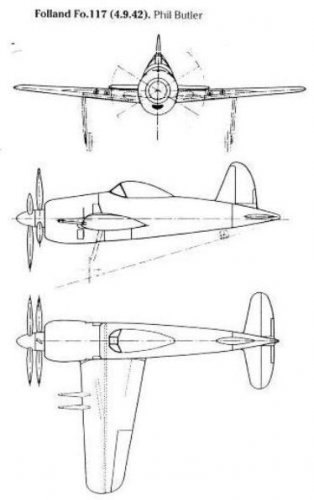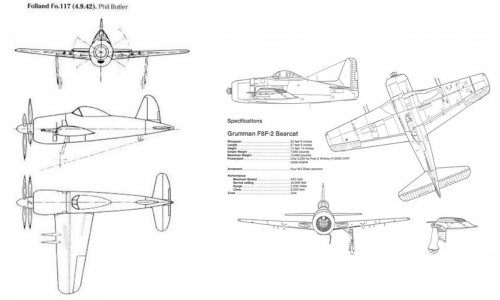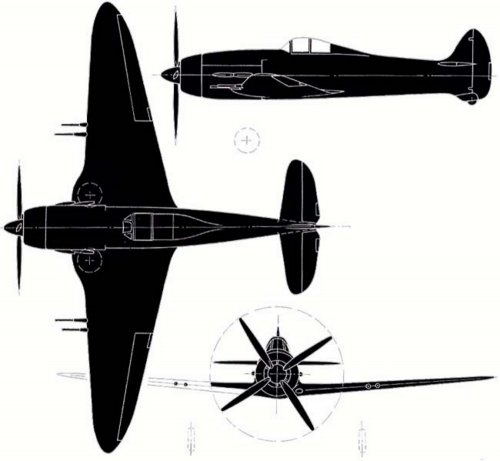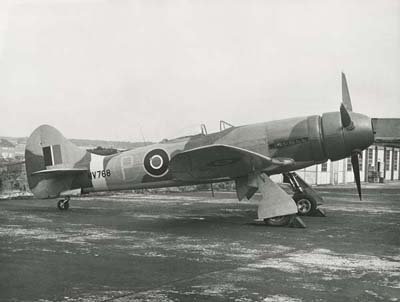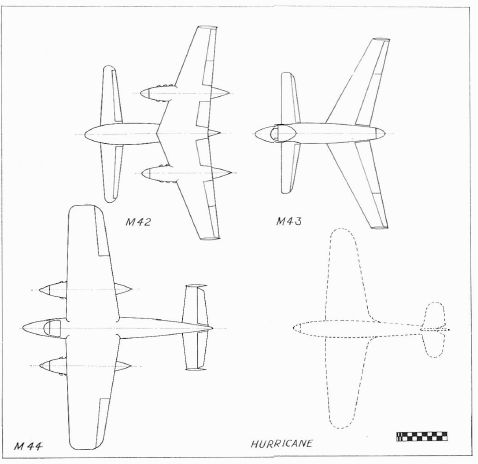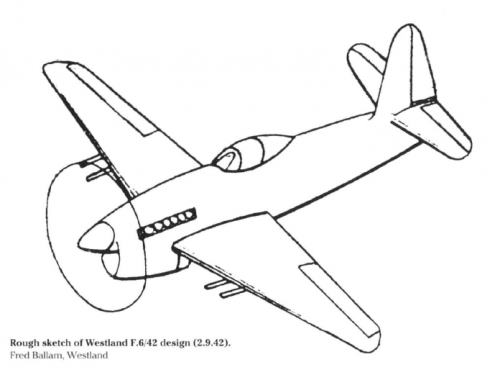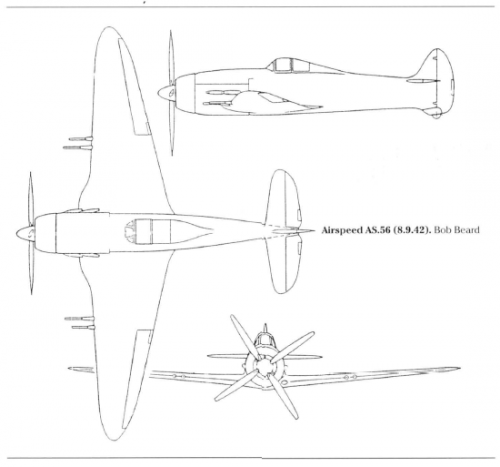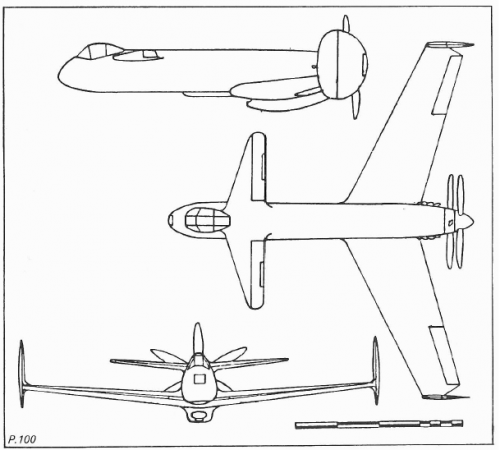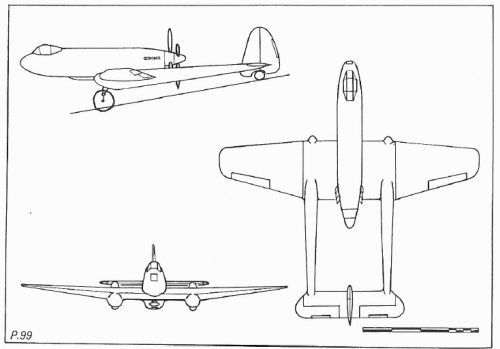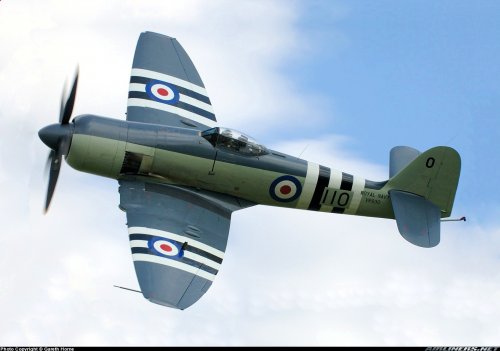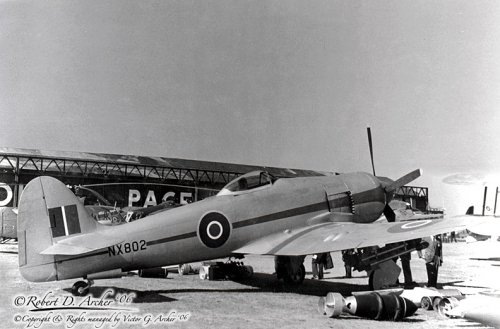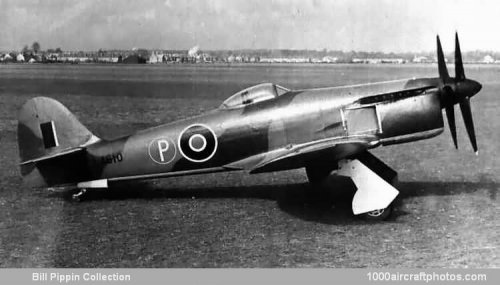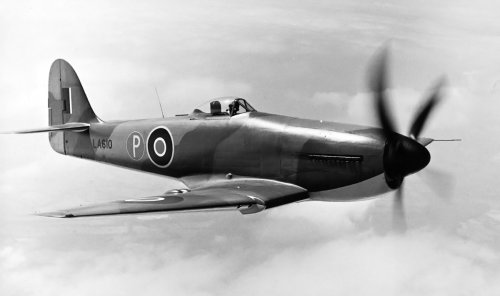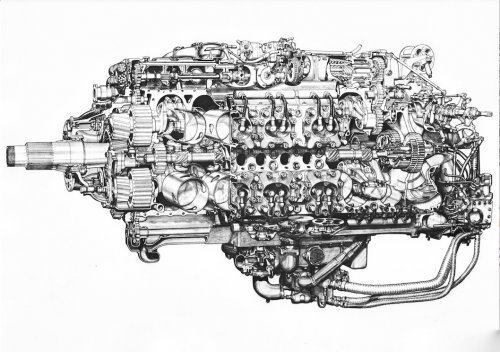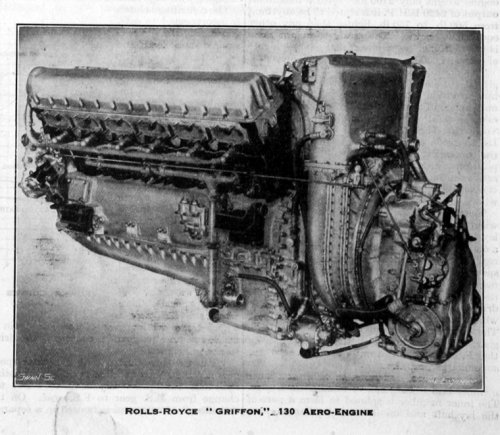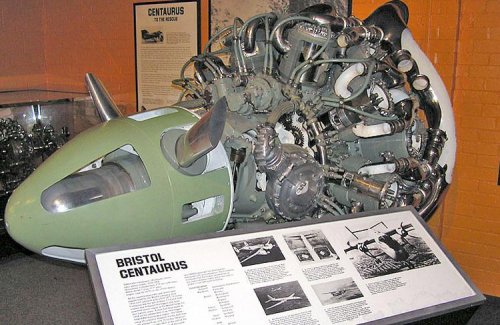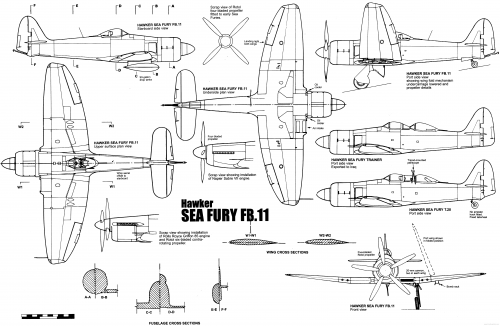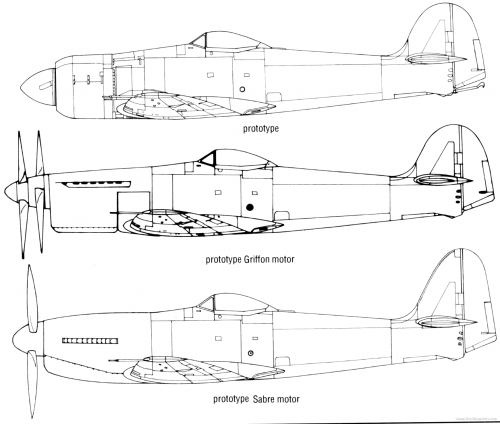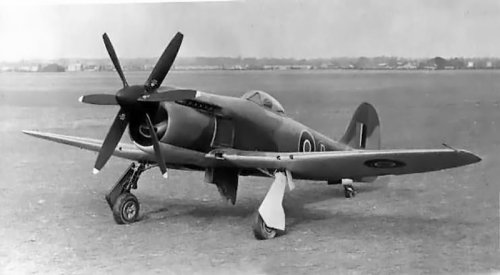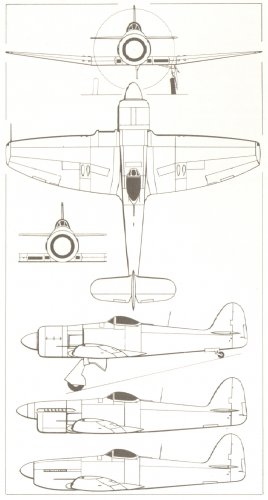blackkite
Don't laugh, don't cry, don't even curse, but.....
- Joined
- 31 May 2007
- Messages
- 8,297
- Reaction score
- 5,904
British specification F.6/42 Single seat high performance light fighter in 1942.
Folland proposal Fo.117.
Image source.
https://www.alternatehistory.com/forum/threads/wi-glosters-unnamed-fighter.336944/page-3
http://raigap.livejournal.com/219959.html
Folland Fo.117 Single-Seat Lightweight Monoplane Fighter Aircraft Proposal
https://www.militaryfactory.com/aircraft/detail.asp?aircraft_id=1714
"The Fo.117 found a few supporters in the British Air Ministry ranks but not enough faith was seen in the small company to produce an all-new fighter in the schedule allotted and in the numbers that would be required. By March of 1943, the Fo.117 was given the death knell but, before the end of the year, it was resurrected as the "Fo.117A(Fo.117A - Revised design with all-new laminar-flow wings; Bristol Centaurus XII engine of 2,500 horsepower fitted..)" with new wings. The engine of choice became the Bristol Centaurus XII engine of 2,500 horsepower and English Electric was set to offer its production facilities following the six prototypes contracted for from Folland.
Despite this, nothing came of the commitment and the Fo.117 never saw the light of day. The competing Hawker design found better results as it became the "Fury / Sea Fury" in British service. Eight hundred sixty-four of these navy fighter-bombers were built from 1945 to 1955."
"Propulsion: 1 x Bristol Centaurus XII air cooling radial engine developing 2,500 horsepower and driving 2 x three-bladed propeller units in contra-rotating fashion at the nose.
Maximum Speed: 469 mph (755 kph; 408 knots)
Maximum Range: 513 miles (825 km)
Service Ceiling: 39,797 feet (12,130 meters; 7.54 miles)
Rate-of-Climb: 4,950 feet-per-minute (1,509 m/min)
Operating Crew (Typical): 1
Overall Length: 31.50 feet (9.6 meters)
Overall Width: 35.93 feet (10.95 meters)
Overall Height: 10.83 feet (3.30 meters)
Weight (Empty): 6,834 lb (3,100 kg)
Weight (MTOW): 9,755 lb (4,425 kg)
Armament :
4 x 20mm automatic cannons in wings (two per wing). "
Folland proposal Fo.117.
Image source.
https://www.alternatehistory.com/forum/threads/wi-glosters-unnamed-fighter.336944/page-3
http://raigap.livejournal.com/219959.html
Folland Fo.117 Single-Seat Lightweight Monoplane Fighter Aircraft Proposal
https://www.militaryfactory.com/aircraft/detail.asp?aircraft_id=1714
"The Fo.117 found a few supporters in the British Air Ministry ranks but not enough faith was seen in the small company to produce an all-new fighter in the schedule allotted and in the numbers that would be required. By March of 1943, the Fo.117 was given the death knell but, before the end of the year, it was resurrected as the "Fo.117A(Fo.117A - Revised design with all-new laminar-flow wings; Bristol Centaurus XII engine of 2,500 horsepower fitted..)" with new wings. The engine of choice became the Bristol Centaurus XII engine of 2,500 horsepower and English Electric was set to offer its production facilities following the six prototypes contracted for from Folland.
Despite this, nothing came of the commitment and the Fo.117 never saw the light of day. The competing Hawker design found better results as it became the "Fury / Sea Fury" in British service. Eight hundred sixty-four of these navy fighter-bombers were built from 1945 to 1955."
"Propulsion: 1 x Bristol Centaurus XII air cooling radial engine developing 2,500 horsepower and driving 2 x three-bladed propeller units in contra-rotating fashion at the nose.
Maximum Speed: 469 mph (755 kph; 408 knots)
Maximum Range: 513 miles (825 km)
Service Ceiling: 39,797 feet (12,130 meters; 7.54 miles)
Rate-of-Climb: 4,950 feet-per-minute (1,509 m/min)
Operating Crew (Typical): 1
Overall Length: 31.50 feet (9.6 meters)
Overall Width: 35.93 feet (10.95 meters)
Overall Height: 10.83 feet (3.30 meters)
Weight (Empty): 6,834 lb (3,100 kg)
Weight (MTOW): 9,755 lb (4,425 kg)
Armament :
4 x 20mm automatic cannons in wings (two per wing). "

